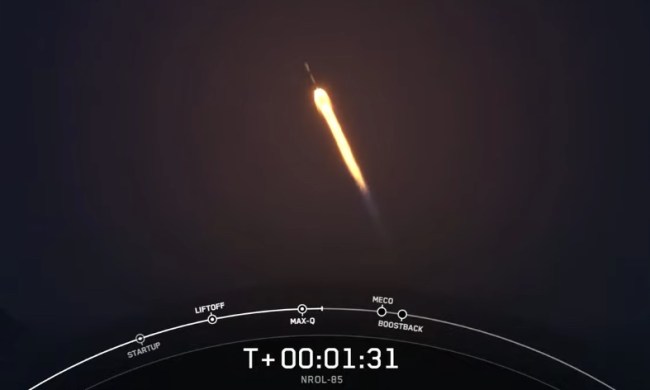SpaceX plans to launch a Falcon Heavy rocket carrying a payload of satellites Monday evening. NASA will livestream the whole event starting at 11 p.m. PT after SpaceX delayed its launch by three hours.
This new launch is SpaceX’s first for the U.S. Department of Defense and will be challenging because it will involve four separate upper-stage engine burns in addition to three separate deployment orbits.
The entire launch procedure is expected to take about six hours. Add to this the fact that this will be the Heavy’s first nighttime launch and it’s no wonder Elon Musk tweeted that this will be SpaceX’s “most difficult launch ever.”
SpaceX delayed its launch, originally scheduled to start around 8:30 p.m. PT, to 11:30 p.m. PT so it could conduct additional ground system checkouts.
“Vehicle and payload continue to look good,” SpaceX tweeted earlier Monday evening.
Launch update! To allow time for additional ground system checkouts, liftoff is now targeted at 2:30 a.m. EDT for the @SpaceX Falcon Heavy with four @NASA_Technology missions on board. The latest: https://t.co/YWkuiNxTyH
NASA TV goes live: 2am ET
Launch window opens: 2:30am ET pic.twitter.com/VMNHEUTL7K— NASA (@NASA) June 25, 2019
The Falcon Heavy is a larger version of SpaceX’s frequently-used Falcon 9 rocket, designed to carry more equipment. It has the highest capacity in terms of payload of any rocket launch vehicle currently in use. Along with the main body of the rocket, the Heavy has two strap-on boosters which have successfully returned to Earth during flights, albeit not without incident: SpaceX lost the central core booster of its rocket after in fell into the ocean in April.
At the first launch of the Falcon Heavy during its test flight in February 2018, Musk was visibly emotional, saying the launch taught him that “crazy things can come true.” He confided that he had been harboring doubts about the launch, but seeing the successful test flight gave him “a lot of confidence” in the advancements SpaceX could make. This flight succeeded in delivering its dummy payload of a Tesla Roadster into space. Since then, a second test flight in April succeeded in delivering Arabsat satellites into orbit.
Monday’s mission is codenamed STP-2, which stands for Space Test Program 2, and will carry a payload of equipment including 24 satellites into orbit. Among the satellites will be a set of small Cubesats, including the E-TBEx which measures radio signals, the Launch Environment Observer (LEO) and StangSatthermal, which measure thermal and vibration environments, and the LightSail 2, which will test the feasibility of solar sail technology promoted by Bill Nye.
The stats on the launch are impressive, with the Falcon Heavy carrying 27 Merlin engines which together will produce more than 5 million pounds of thrust at liftoff. SpaceX says that’s equivalent to around eighteen 747 aircraft. The total weight of the craft is more than 3 million lbs., or 1.4 million kg., and can lift 141,000 lbs. or 640,000 kg.
The launch is scheduled for Monday, June 24 at 11:30 p.m. PT, but is dependent on weather conditions. You can watch NASA’s livestream of the launch above, with coverage starting at 11 p.m. PT.
Updated with information about launch delay.



